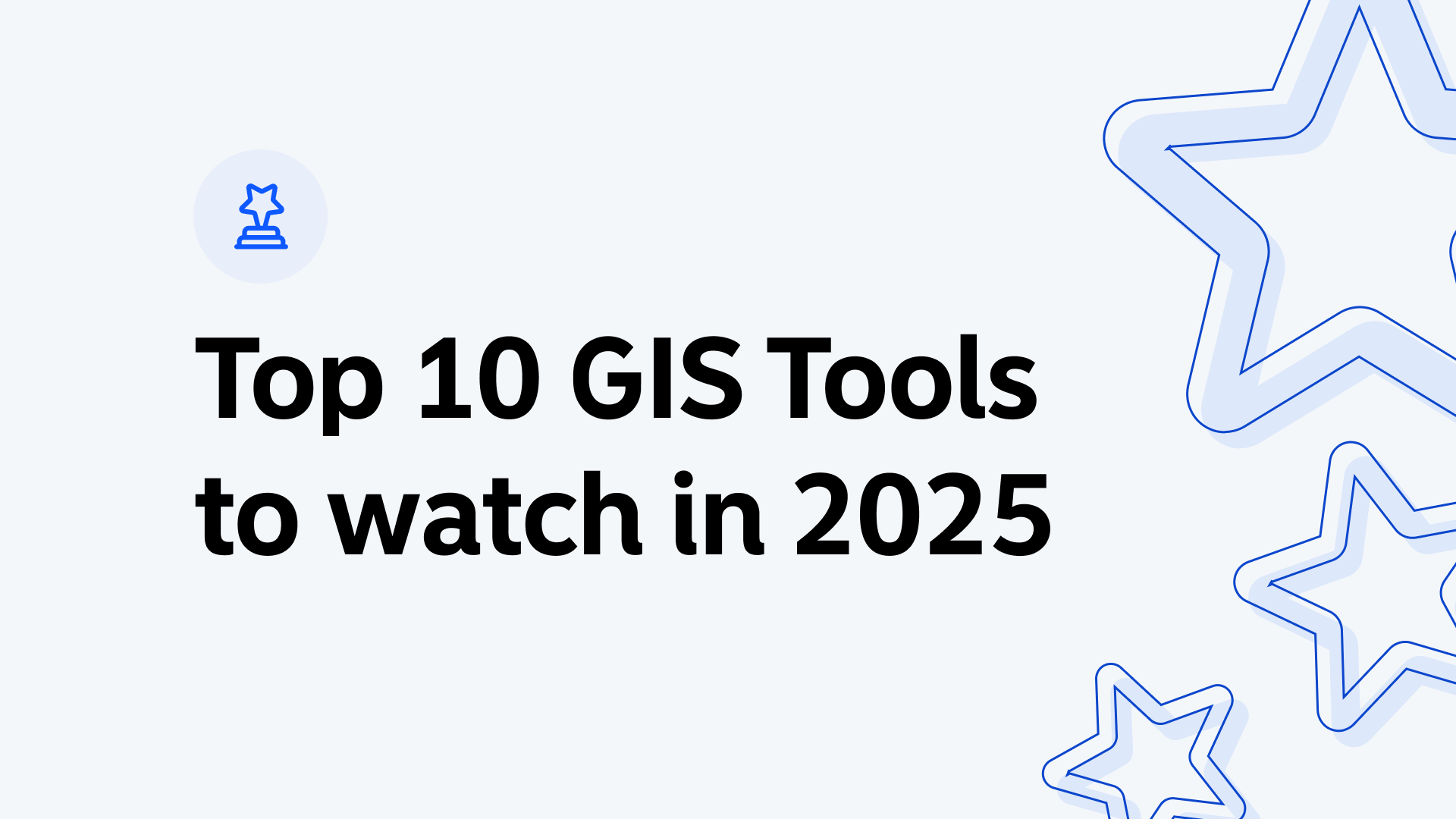The world of Geographic Information Systems (GIS) is evolving rapidly. From traditional desktop applications to browser-based solutions, GIS software now serves diverse fields like urban planning, logistics, agriculture, and environmental conservation. Below, we explore the top 10 GIS software solutions poised to make a significant impact in 2025.
1. Atlas
Atlas is a browser-based GIS platform that focuses on simplicity and collaboration. It's perfect for teams who need to create and share maps without a steep learning curve. Atlas provides real-time collaboration, interactive map-building, and robust data visualization tools—all accessible from your browser.
Why Watch:
- Zero coding required for building interactive map applications.
- Tailored for teamwork with real-time collaboration features.
- Affordable plans with free options for smaller teams.
Atlas is ideal for analysts, planners, and educators who value ease of use and collaboration.
2. ArcGIS Online
From Esri, ArcGIS Online offers advanced GIS capabilities for professionals who need deep spatial analysis tools. With built-in apps like StoryMaps and seamless integration across Esri's ecosystem, it’s a powerful choice for organizations that demand detailed data analysis.
Why Watch:
- Extensive GIS tools for advanced analysis.
- Supports team collaboration with shared map layers.
- Scalable for small teams and large enterprises.
Perfect for industries requiring robust geospatial insights.
3. QGIS
QGIS is a free, open-source GIS tool popular among researchers and academics. While it’s not as user-friendly as browser-based platforms, its flexibility and customizability make it an excellent option for advanced users.
Why Watch:
- Regular updates from a global community of developers.
- Extensive plugin library for specialized tasks.
- No subscription fees.
QGIS is an excellent choice for users with a technical background who need a budget-friendly option.
4. Maptive
Maptive is a cloud-based GIS solution tailored to businesses. It integrates seamlessly with spreadsheets, allowing teams to create data-driven maps for logistics, marketing, and sales.
Why Watch:
- Easy data import from Excel or Google Sheets.
- Customizable maps for business applications.
- Simple sharing options via links or embeds.
Great for professionals who rely heavily on data visualization to drive decisions.
5. Google Earth Pro
While known for its visual appeal, Google Earth Pro also offers GIS capabilities like historical imagery, area measurement, and data import. Its simple interface makes it a favorite for beginners.
Why Watch:
- Highly visual maps with satellite and 3D features.
- Free to use with a wide range of tools.
- Ideal for storytelling and education.
Google Earth Pro is perfect for educators, hobbyists, and entry-level GIS users.
6. Datawrapper
Datawrapper specializes in creating interactive maps for media and presentations. While it lacks deep GIS capabilities, its focus on aesthetics and accessibility makes it a standout for journalists and marketers.
Why Watch:
- No coding required to create interactive maps.
- Quick and easy data import for visualizations.
- Free and paid options available.
An ideal choice for data visualization specialists.
7. Felt
Felt is an emerging GIS platform designed for real-time collaboration. It emphasizes simplicity and accessibility, allowing users to sketch, layer, and annotate maps directly in the browser.
Why Watch:
- Excellent collaboration tools for teams.
- Streamlined interface for non-technical users.
- Free version with scalable paid plans.
A promising tool for collaborative mapping projects.
8. CARTO
CARTO is a cloud-based GIS tool aimed at businesses and developers. It integrates location data with advanced analytics, making it a go-to for organizations that require spatial intelligence.
Why Watch:
- Advanced data integration with SQL support.
- Industry-specific solutions for retail, real estate, and logistics.
- Cloud-based for scalability and accessibility.
CARTO excels in industries that need predictive analytics and advanced data modeling.
9. Scribble Maps
Scribble Maps is a basic yet versatile GIS tool suitable for quick annotations and sharing. It’s best for users who need straightforward tools without complex features.
Why Watch:
- Simple tools for drawing and annotating maps.
- Free and paid plans for various use cases.
- Real-time collaboration features.
Scribble Maps is ideal for small teams and educators.
10. Tableau with GIS Integration
While Tableau isn’t a traditional GIS software, its geospatial analytics features make it a valuable tool for businesses. Users can integrate GIS data to create dynamic dashboards.
Why Watch:
- Combines data visualization with geospatial insights.
- Seamless integration with GIS data sources.
- Powerful for data-driven decision-making.
Perfect for analysts and managers who prioritize storytelling and insights.
Choosing the Right GIS Solution
When selecting a GIS tool, consider factors like ease of use, collaboration features, and your specific industry needs. Browser-based platforms like Atlas and Felt offer accessibility and teamwork advantages, while tools like ArcGIS Online and QGIS cater to advanced spatial analysis.
The future of GIS lies in making geospatial tools accessible to everyone—from professionals to educators and hobbyists. With these top solutions, 2025 promises a more connected and interactive GIS landscape.





